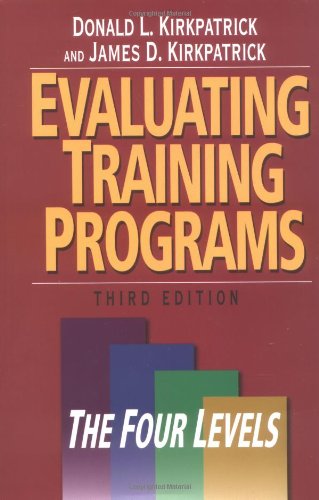Evaluating Training Programs: The Four Levels pdf download
Par gibson america le samedi, avril 30 2016, 17:15 - Lien permanent
Evaluating Training Programs: The Four Levels by Donald L Kirkpatrick


Evaluating Training Programs: The Four Levels Donald L Kirkpatrick ebook
ISBN: 1576753484,
Publisher: Berrett-Koehler Publishers
Format: pdf
Page: 399
I've always wondered what the fuss is all about. How do trainers evaluate whether training has been effective. Evaluating fellowship programmes. More in category: Longhorn Project Diary In Part 1 I mentioned an evaluation model, referred to in the training industry as Kirkpatrick's Four Levels of Evaluation. Donald Kirkpatrick (2006) offers four levels of evaluation in his timeless book Evaluating Training Programs. Paraprofessionals known as Program Representatives provide the day-to-day operations for programming at the local level. Donald Kirkpatrick's 1994 book 'Evaluating Training Programs' defined four levels of evaluation that he found necessary in determining the value and worth of training programs. Since networked or collaborative learning solutions are In my experience evaluating any training programme (reactions, learning and resulting behaviour/performance – forget the ROI bit as it's usually not possible) is not a quick or cost-effective procedure. Cyber Monday Sales Evaluating Training Programs: The Four Levels (3rd Edition) Black Friday. Traditional training analyses, such as Kirkpatrick's four levels of evaluation, were designed to assess solutions that are delivered in a linear manner. One popular approach is Kirkpatrick's Four Levels of Evaluation. Classification of different type of measures abound. I suggested it might have some application as Applicability in social networks: Just like in training programs, Level 1 evaluations for social networks would also fall in the area of measuring satisfaction. More detail Check Price Now !!! There are several approaches used to measure the effectiveness of training. Questions should address all four levels of evaluation: level 1: participant reaction; level 2: learning; level 3: transfer; level 4: business results (Kirkpatrick model) 4.